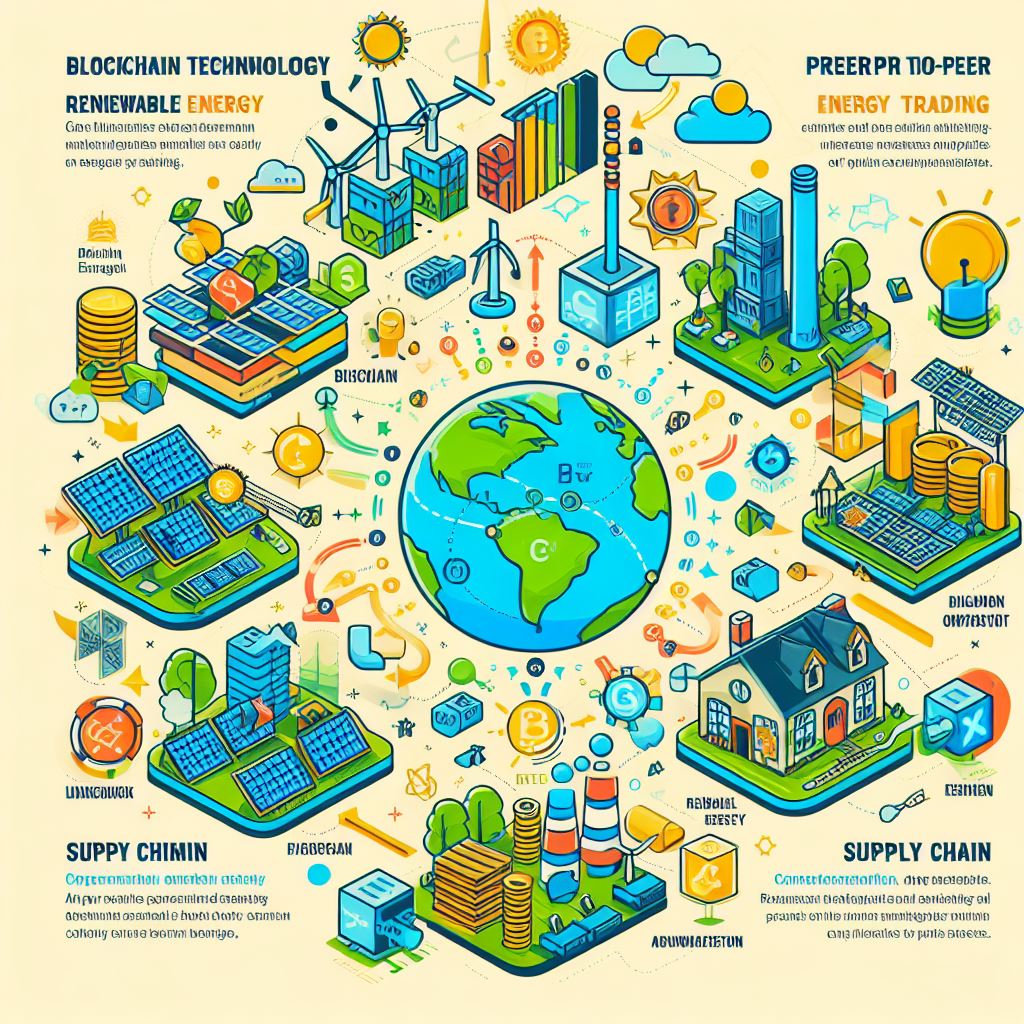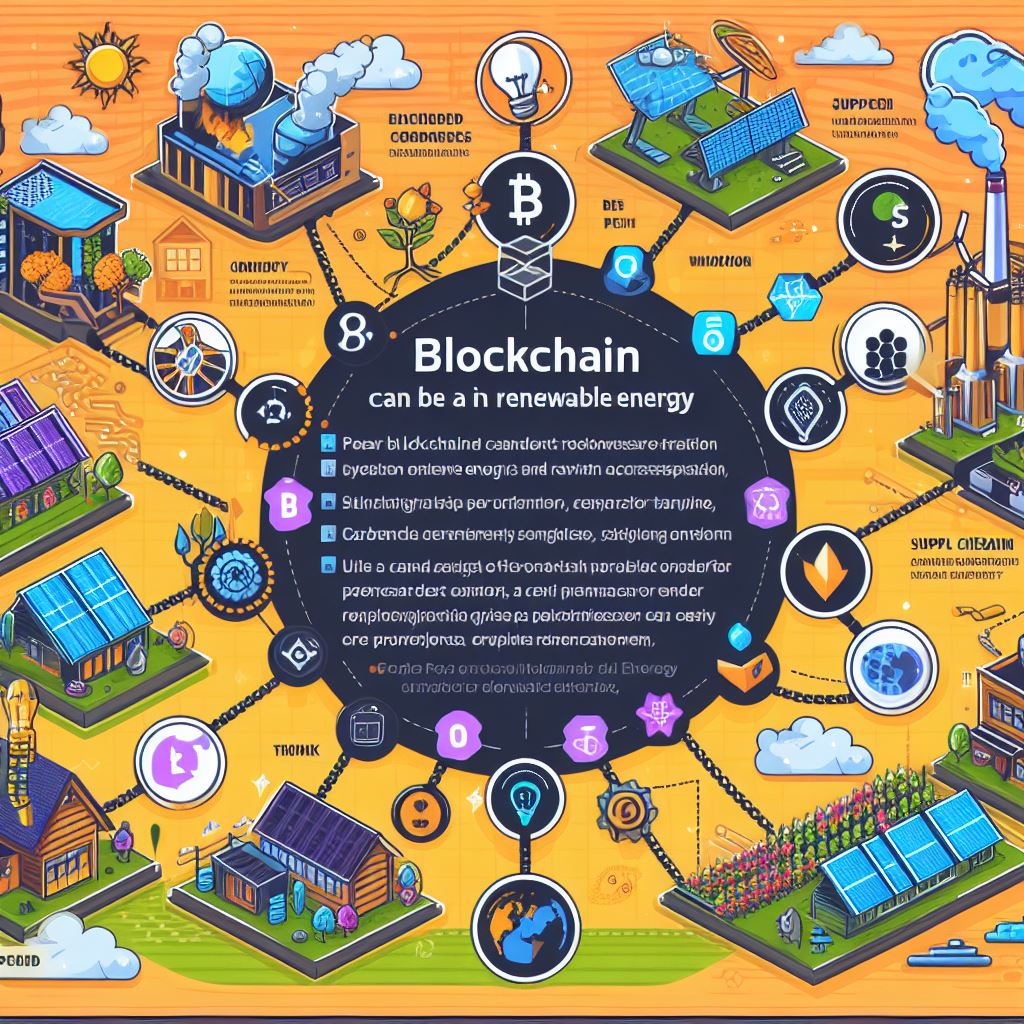
Advancements in blockchain technology have been breaking ground across various sectors, with the energy domain witnessing an unprecedented transformation. When we delve into blockchain applications within renewable energy, we’re discussing a revolution that’s set to redefine how green energy is produced, distributed, and consumed. It’s a big moment for the acceleration of sustainable practices, and the implications are too significant to ignore.
Blockchain’s Role in Green Energy
The intrinsic features of blockchain technology make it a natural ally for renewable energy operations. Decentralization, transparency, immutability, and accountability are not just fancy terms; they are the building blocks of a system that can handle the complexities of modern energy demands with a lean toward sustainable development.
Decentralization plays a pivotal role in this narrative. Traditionally, energy generation and distribution have been in the hands of a few significant players, leading to centralization of power—both literally and figuratively. However, blockchain paves the way for an energy transformation where end-users can become producers and suppliers on an unprecedented scale, thanks to concepts such as microgrids and peer-to-peer (P2P) energy trading.
Let’s dig deeper into how this decentralization has a blooming relationship with green energy. Renewable energy, especially from sources like solar and wind, is often produced where it’s not needed and consumed where it’s not produced. This geographical and temporal mismatch is a recipe for logistical nightmares. But, what if consumers could trade excess energy production with those who need it, through a secure, immediate, and transparent medium? Enter blockchain.
Blockchain can record, verify, and execute energy transactions across a decentralized network, facilitating energy redistribution with efficiency that traditional systems can scarcely touch. These transactions are enhance the accessibility and affordability of renewable energy by leveling the playing field.
Revamping the Grid with Blockchain’s Transparent Ledger
The transparency proffered by blockchain comes from its ability to maintain a tamper-proof ledger of transactions. When applied to green energy, this means every watt produced can be tracked from source to consumption, providing stakeholders a clear view of the energy flow. This capability is critical in garnering trust among users and simplifying the complexity that often comes along with renewable energy credits and certificates, which are crucial in promoting renewable energy usage.
By using smart contracts — self-executing contracts with the terms of the agreement between buyer and seller directly written into lines of code — the entire process becomes automated. These digital contracts ensure that once predefined conditions are met, actions such as payments for the energy delivered, or penalties for underperformance, are triggered without human intervention. As you can imagine, this not only cuts down on administrative overheads but also diminishes opportunities for errors or manipulations.
Renewable Energy Optimization through Blockchain
Renewable energy optimization is another facet where blockchain shines. For renewables to make an impact, their integration into the energy mix must be proficient. Blockchain can handle large volumes of data from various sources — such as solar arrays, wind turbines, and consumption meters — to create an optimal distribution strategy.
When we talk about renewable energy optimization, we’re also referring to managing the variability and intermittency of renewable sources. Blockchain works in tandem with smart grid technologies to ensure that when the sun shines and winds blow, the generated energy doesn’t just go to waste. Through real-time data management and sophisticated algorithms, the blockchain-enabled smart grid can predict generation spikes and lulls and adjust distribution accordingly.
What’s more intriguing is the potential for blockchain to facilitate the creation of virtual power plants (VPPs). Ensembles of distributed energy resources work together to generate power as a single entity. VPPs leverage the diversity of renewable sources to maintain grid stability and ensure continuous supply, all managed and optimized through the seamless communication of blockchain networks.
A Platform for Future Innovations
Green energy blockchain platforms are increasingly becoming hubs for innovation, attracting tech giants, innovators, and investors. These platforms offer a level of engagement and collaboration that’s necessary for the energy sector’s continued evolution toward sustainability and democratization.
What’s more, these platforms can become central to funding new renewable projects through mechanisms such as green bonds or tokenization, where part of the funding is raised via cryptocurrencies backed by actual renewable energy projects. Such financial instruments democratize the investment process, giving individuals the opportunity to support green initiatives actively and enjoy a revenue stream generated from renewable energy assets.
Green Energy Blockchain: From Concept to Reality
Across the globe, numerous pilot projects and fully operational platforms are showcasing the impressive capabilities of blockchain in revolutionizing the renewable sector. From micro-generation projects in remote communities to national power grids incorporating blockchain for enhanced security and efficiency, the possibilities seem to multiply by the day.
In Europe, for example, innovative projects demonstrate how households with solar panels can trade excess energy with neighbors, earning cryptocurrency in return. Elsewhere, providers are offering blockchain-based solutions for tracking the origin of green energy, ensuring consumers can choose truly sustainable options.
Engaging Participants Across the Spectrum
One of the most transformative aspects of blockchain in renewable energy is the empowerment of the consumer. The traditional role of the passive consumer is replaced by ‘prosumers’ — producer-consumers who produce and sell it. By incentivizing the production of renewable energy, blockchain platforms can lead to a surge in green energy adoption.
Energy-intensive industries are taking note. By adopting blockchain-powered renewable energy solutions, they can mitigate their environmental impact, attract eco-conscious consumers, and enjoy renewable energy’s economic benefits. Governments, too, find blockchain an appealing tool for achieving their renewable energy goals and ensuring supply security.
Challenges such as regulatory frameworks, technical scalability, and cybersecurity remain. Yet, as technology progresses and stakeholders become increasingly savvy, solutions to these issues are emerging. The collaborative nature of blockchain itself encourages a problem-solving ethos that often turns hurdles into opportunities for further innovation.
Looking Forward
Looking ahead, blockchain applications in renewable energy promise a greener future and one where energy is more accessible, more reliable, and more in the hands of those who use it.
Staying informed and engaged is crucial. Every new development, every successful deployment, and every lesson learned is a stepping stone to a system where green energy and advanced technologies go hand-in-hand, creating a resilient, sustainable energy infrastructure for generations to come.
As we move forward, we can observe, participate, and even drive this transformation, ensuring that the intersection of blockchain technology and renewable energy remains a hotbed of innovation, with the potential to reshape our world in ways we are just beginning to fathom.

